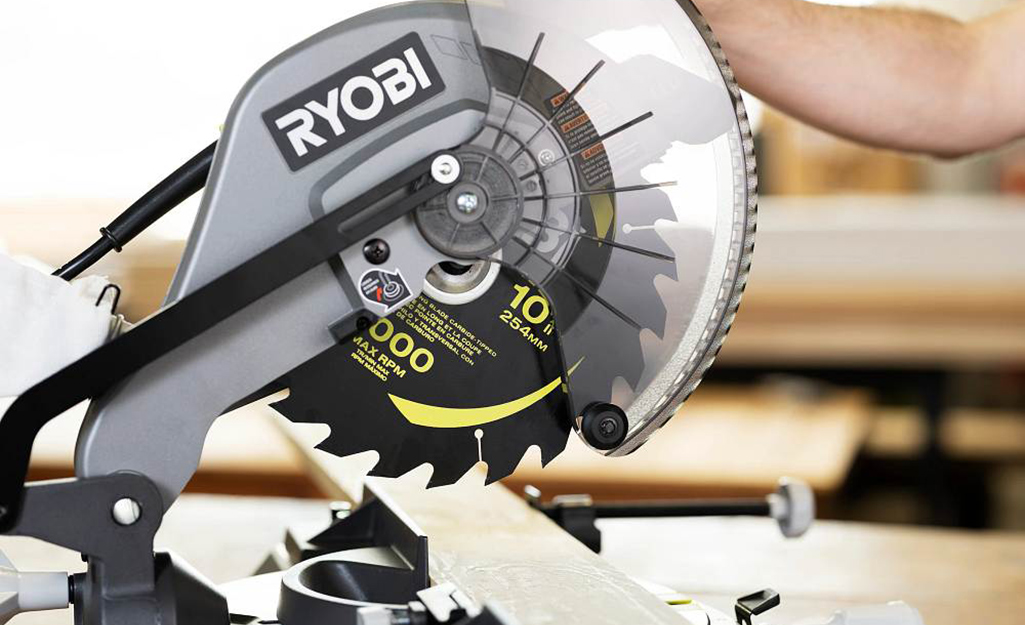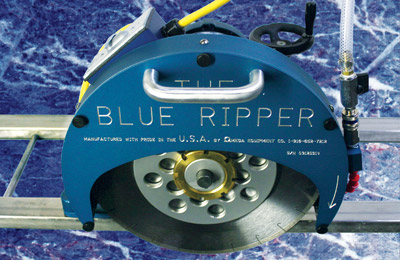Choosing the best diamond blade for your project is essential. It ensures precision and efficiency.
Whether you’re a professional or a DIY enthusiast, selecting the right diamond blade can make a big difference. Diamond blades come in various types, each designed for specific materials and tasks. With so many options, it can feel overwhelming to pick the right one.
Understanding the key factors, such as blade type, material, and project requirements, is crucial. In this guide, we will walk you through the essential points. This will help you make an informed decision for your project. Get ready to learn how to choose the best diamond blade with confidence. Let’s dive in!
Understanding Diamond Blades
Choosing the right diamond blade is crucial for your project. It ensures efficiency and precision. Let’s dive into the essentials of understanding diamond blades.
What Are Diamond Blades?
Diamond blades are cutting tools with diamond segments. These segments are attached to the blade’s edge. They are used for cutting hard materials. Common materials include concrete, stone, and tile.
Diamonds are the hardest natural material. This makes diamond blades highly effective. They provide clean and precise cuts. They also last longer than other blades.
Types Of Diamond Blades
There are different types of diamond blades. Each type is designed for specific materials and tasks. Here are some common types:
- Continuous Rim Blades: These blades have a smooth, continuous edge. They are ideal for cutting tiles and ceramics. They provide a clean and chip-free cut.
- Segmented Blades: These blades have a segmented edge. They are designed for cutting concrete, brick, and masonry. They offer fast cutting speeds and are suitable for dry cutting.
- Turbo Blades: Turbo blades have a serrated edge. They combine the features of continuous and segmented blades. They are versatile and can be used for both wet and dry cutting.
- Electroplated Blades: These blades have a single layer of diamonds. They are used for cutting soft materials like marble and granite. They provide a smooth finish.
Choosing the right type of diamond blade is crucial. It depends on the material you are cutting. It also depends on whether you need a wet or dry cut. Understanding these differences helps you make the right choice.
Assessing Your Project Needs
Choosing the right diamond blade can make or break your project. You need to assess your project needs carefully. This section will guide you through key factors to consider.
Material To Be Cut
First, identify the material you will cut. Different blades are designed for different materials. Will you cut concrete, asphalt, or tile? Each material requires a specific type of blade. For example, a blade for concrete may not work well on tile. Knowing your material helps you choose the right blade.
Project Scale And Scope
Next, consider the scale and scope of your project. Is it a small DIY task or a large construction job? Smaller projects might need a basic blade. Larger projects may require a more durable and long-lasting blade. Think about how much cutting you will do. The frequency and intensity of use also matter.
Understand these needs to pick a blade that lasts. A mismatch can lead to wasted time and money. Assess these factors carefully before buying.
Blade Specifications
Choosing the right diamond blade is crucial for the success of your project. Blade specifications play a vital role in this decision. Understanding these specifications helps you pick the perfect blade. Let’s dive into the key aspects you should consider.
Blade Diameter
The diameter of the blade determines the depth of the cut. It is important to match the blade diameter with your cutting tool. Smaller blades are suitable for precision work. Larger blades are ideal for deeper cuts. Always check your tool’s manual for the recommended blade size.
Arbor Size
The arbor size is the hole in the center of the blade. It fits onto the spindle of your cutting tool. Make sure the arbor size of the blade matches your tool. Mismatched sizes can lead to poor performance or even damage. Check your tool’s specifications to find the correct arbor size.
Segment Types
Choosing the right diamond blade for your project involves understanding the different segment types. Each segment type offers unique advantages, depending on the material you are cutting. Here, we’ll delve into two main segment types: Continuous Rim Blades and Segmented Rim Blades.
Continuous Rim Blades
Continuous rim blades are known for their smooth and precise cuts. These blades have no segments, providing a continuous cutting edge. This makes them ideal for cutting materials like:
- Ceramic tiles
- Porcelain
- Granite
- Marble
Benefits of Continuous Rim Blades:
- Perfect for wet cutting
- Minimizes chipping
- Provides a clean finish
These blades are often used with water to keep the blade cool. This ensures a longer blade life and maintains the quality of the cut.
Segmented Rim Blades
Segmented rim blades feature distinct segments separated by gullets. These blades are designed for aggressive cutting and are suitable for tougher materials like:
- Concrete
- Brick
- Pavers
- Asphalt
Advantages of Segmented Rim Blades:
- Efficient at dry cutting
- Faster cutting speed
- Better heat dissipation
The gullets between the segments allow for better removal of debris. This helps to reduce friction and extend the blade’s life.
Both continuous and segmented rim blades have their unique uses. Understanding these differences can help you choose the best diamond blade for your project.
Choosing The Right Bond
Choosing the right bond for your diamond blade can make a big difference in your project’s success. The bond of a diamond blade holds the diamond grit in place, affecting how well it cuts through materials. There are two main types of bonds: soft bond blades and hard bond blades. Each type has its own strengths and is best suited for different materials.
Soft Bond Blades
Soft bond blades are designed to cut through hard materials like granite, stone, and concrete. These blades wear down quickly, exposing fresh diamond grit for a sharper cut. This feature ensures efficient and fast cutting through tough materials.
- Ideal for: Hard materials
- Wear rate: Fast
- Cutting speed: High
Soft bond blades are perfect for projects that involve cutting hard surfaces. They offer quick cuts but need replacing more often.
Hard Bond Blades
Hard bond blades are made for cutting softer materials like asphalt, brick, and limestone. These blades last longer because they wear down slowly. This ensures that the diamond grit stays in place for a longer time, providing a consistent cutting experience.
- Ideal for: Soft materials
- Wear rate: Slow
- Cutting speed: Moderate
Hard bond blades are the best choice for projects that require prolonged cutting of softer surfaces. They offer durability but may cut slower.
Understanding the type of bond you need can help you pick the right diamond blade. This decision will impact the efficiency, cost, and quality of your work.

Credit: www.homedepot.com
Wet Vs. Dry Cutting
Choosing the best diamond blade is crucial for your project. One key decision is whether to use wet or dry cutting. Both methods have unique advantages. Understanding them helps you make the right choice.
Advantages Of Wet Cutting
Wet cutting involves using water to cool the blade. This method has several benefits:
- Reduces Dust: Wet cutting minimizes dust. This makes the work environment safer.
- Extends Blade Life: Water cools the blade. This reduces heat and extends its lifespan.
- Improves Cut Quality: Wet cutting provides smoother cuts. It also prevents chipping.
Wet cutting is ideal for large-scale projects. It’s especially useful when working with concrete or stone.
Benefits Of Dry Cutting
Dry cutting does not use water. This method is also advantageous:
- Convenience: Dry cutting is easier to set up. You don’t need water or a hose.
- Portability: It’s ideal for small or remote projects. You can use it anywhere.
- Versatility: Dry cutting is suitable for various materials. These include tile, brick, and masonry.
Dry cutting is useful for quick and short tasks. Especially where water supply is limited.
Safety Considerations
Safety considerations are crucial when using diamond blades in your projects. Ensuring the safety of yourself and others can prevent accidents and injuries. Below are key safety aspects to consider when working with diamond blades.
Proper Blade Installation
Proper blade installation is essential. Always check the blade for any damage before use. Ensure the blade is compatible with your equipment. Follow the manufacturer’s instructions for installation. Tighten the blade securely to avoid wobbling. Test the blade at low speed to check for proper installation.
Protective Gear
Wearing protective gear is vital. Always wear safety glasses to protect your eyes. Use ear protection to guard against loud noise. Wear gloves to protect your hands from sharp edges. Use a dust mask to avoid inhaling harmful particles. Ensure your clothing fits well to prevent snagging.
Maintaining Your Diamond Blade
Maintaining your diamond blade ensures it performs well and lasts longer. Proper maintenance saves you money and time. Let’s explore how to clean and store your diamond blade effectively.
Cleaning Tips
Regular cleaning is essential. It keeps your diamond blade in top condition. Follow these steps for a clean blade:
- After each use, rinse the blade with water to remove dust.
- Use a soft brush to scrub off any remaining debris.
- For stubborn grime, soak the blade in soapy water for a few minutes.
- Rinse thoroughly and dry with a clean cloth.
Remember, never use harsh chemicals. They can damage the blade.
Storage Recommendations
Proper storage prevents damage and extends the blade’s life. Follow these storage tips:
- Store the blade in a dry, cool place.
- Keep the blade in its original packaging or a protective case.
- Avoid stacking blades on top of each other.
- Label the blade for easy identification.
Proper storage reduces the risk of warping or damage. It ensures your blade is ready for the next project.

Credit: www.youtube.com
Frequently Asked Questions
What Is A Diamond Blade?
A diamond blade is a saw blade with diamonds fixed on its edge. It is used for cutting hard materials like concrete, granite, and marble.
How To Choose The Right Diamond Blade?
Consider the material you need to cut, blade size, and type. Choose a blade suited for your specific project.
Can Diamond Blades Cut Through Metal?
Diamond blades are primarily used for cutting hard materials. There are specific diamond blades designed to cut through metal.
How Long Do Diamond Blades Last?
The lifespan of a diamond blade depends on usage, material cut, and maintenance. Typically, they last for several hours of continuous use.
Conclusion
Choosing the best diamond blade doesn’t have to be difficult. Understand your project’s needs first. Then, consider the blade’s material and size. Match the blade to your specific tasks. Always check the blade’s specifications. Quality matters, so invest in a trusted brand.
Your project will thank you. Proper blade choice leads to efficient work and smooth results. Happy cutting!



